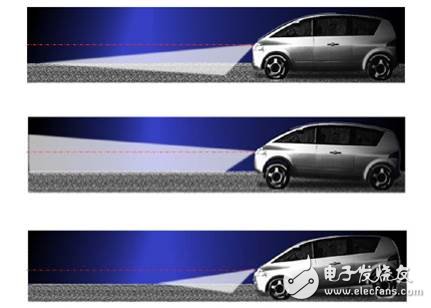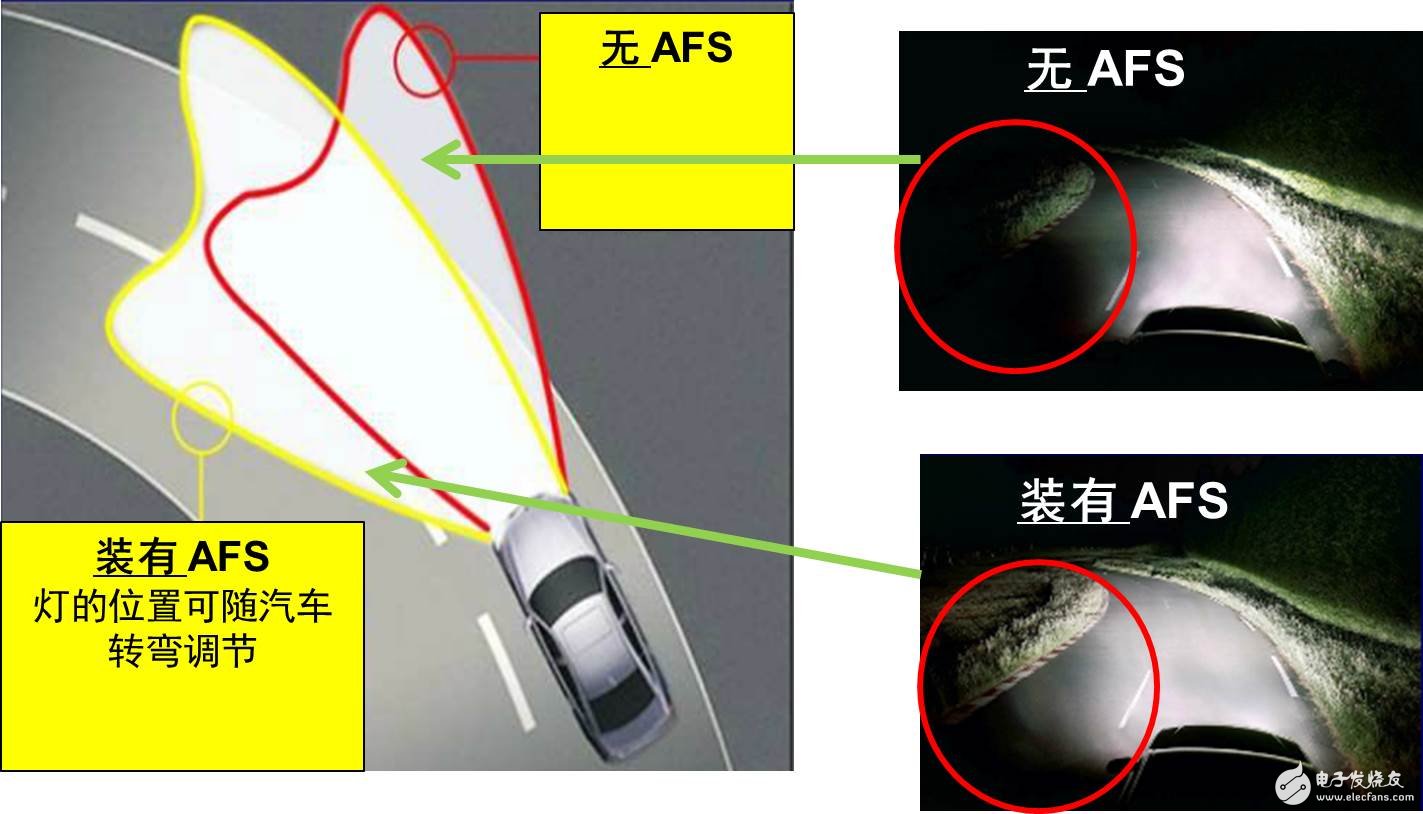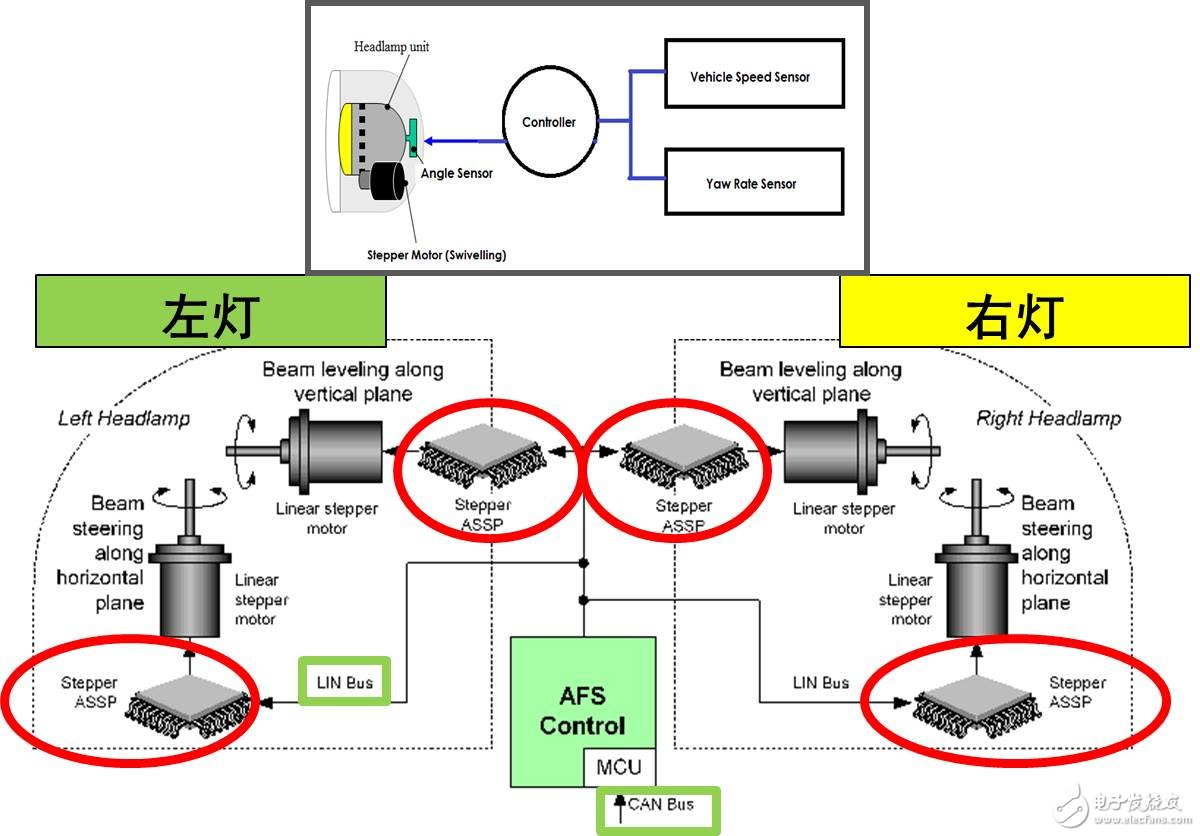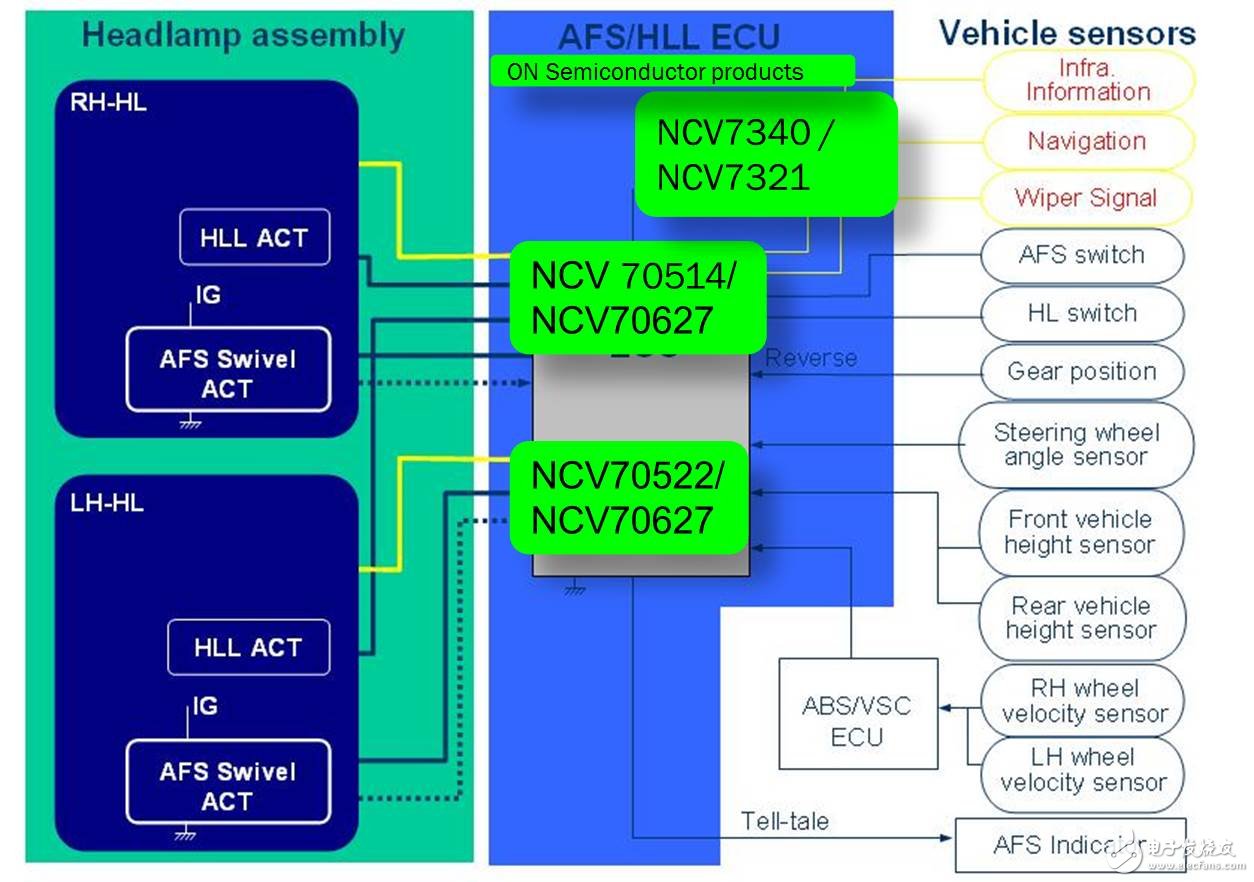ON Semiconductor's motor control solution for automotive adaptive headlight systems
Car lights, like the eyes of cars, are an important part of ensuring safe driving. The traditional automotive lighting system can not meet the increasing demand for safe driving, especially when driving at night. There are two significant shortcomings: First, the driver is easily affected by the glare of the oncoming vehicle. Force increases the hidden danger of accidents; second, the visibility is low at corners or intersections, and there is a blind spot of illumination. According to figures released by the National Highway Traffic Safety Administration, cars spend about 25% of their time at night, but more than 40% of major accidents occur during this time period. In order to reduce glare, European authorities have required automatic headlight leveling systems for cars. The Adaptive Headlight System (AFS) was developed in response to this requirement and automatically adapts to different driving conditions and conditions to illuminate the front, further enhancing driving safety.
Advantages of Adaptive Headlight System (AFS)
(1) Automatic leveling to reduce glare
When the car is driving at a constant speed on a flat road, the headlight beam is directed parallel to the road surface, but in other cases (by speed bump, emergency braking, acceleration or refueling, etc.) may tilt The automatic leveling system keeps the headlight beam of the car parallel to the road surface and helps prevent the headlights from shining too far on an uphill or downhill slope. This function adjusts the headlights through the load axis sensor signal to accommodate different loads and different slope conditions.
The leveling sensor in the self-leveling system sends information about the tilt of the car to the electronic control unit (ECU), and the leveling control unit intelligently filters out clues such as application hints, rate changes, suspension strokes and pressures of the brake or accelerator pedal Sensor data, while calculating the inclination, then the headlights move up or down according to this information so that the driver can correct the change of the distance when the terrain is uneven or brakes, or automatically when the oncoming car is detected. The high beam of the lamp is adjusted to low beam to prevent glare. The upper, middle and lower figures of Figure 1 show the lighting effects of the car under normal horizontal conditions, backward tilting and forward tilting.

Figure 1 AFS automatic leveling 3 lighting effects
(2) Automatically rotating and lighting the blind spot of traditional headlights
Traditional headlamps have a blind spot in the corner because the beam direction is always consistent with the body, the driver can't see the road inside the curve; and the AFS-equipped car can rotate before the real-time sensor data based on the turning angle and wheel speed. The headlights are in the desired direction, illuminating the inside of the curve, improving the safety of the driver and other car drivers and pedestrians (Figure 2).
Various studies have shown that when the car travels to a corner, AFS's automatic rotation function increases the driver's gaze point by a factor of three, and the corner's additional light increases by 58%, helping the driver identify obstacles.

Figure 2 Comparison of lighting effects before and after AFS
How AFS works
Controlling the operation of the headlights is based on inputs from various sensors around the car such as turning position, speed, distance, etc. The driver IC is responsible for converting the output to the desired PWM waveform to drive the stepper motor to the desired position. This requires the motor drive not only to be fast and accurate, but also reliable and fault tolerant. Stepper motors provide smooth and gradual operation with appropriate response times and high accuracy, and are low cost, rugged, provide high torque for a given size, and can be properly positioned without feedback signals, making them suitable for AFS applications.
Stepper motor drives play a key role in adaptive headlamp systems. As shown in Figure 3, there are two stepper motors in the left and right headlights: one adjusts the height of the headlights in the vertical plane, and one adjusts the rotation of the beam in the horizontal plane. The leveling system with the headlights and the communication of the leveling sensors are transmitted via the automotive data network system. The Controller Area Network (CAN) bus is used to collect and distribute sensor data, and the Local Area Network (LIN) bus is used to control the headlights.
The headlight controller uses a suitable beam angle based on the suspended sensor data, yaw rate, body steering angle, and vehicle speed, and sends a high leveling command to the final controlled headlamp. A pair of stepper motor-specific standard products (ASSP) then converts the high-leveling adjustment commands from the headlight control into the necessary motor positioning signals to level or rotate the headlight beam.

Figure 3 AFS works
ON Semiconductor's main motor control solution for AFS
ON Semiconductor offers a variety of solutions for AFS, such as the low-power high-speed CAN transceiver NCV7340 and the stand-alone low-power mixed-signal LIN transceiver NCV7321, microstepping motor driver NCV70514, NCV70627 and NCV70522.
The NCV70514 and NCV70522 are dual H-bridge two-phase microstepping motor drivers that are connected to an external microcontroller via I/O pins and SPI interface, based on the clock signal and motor on the step input pin (NXT). The direction of operation (DIR) initiates the next microstep. Key features include: 7 modes from full step to 32 microsteps, fully integrated current sensor, PWM current control, automatic speed regulation, and more.
The NCV70514 signals a fault when it detects an electrical fault, undervoltage, or rising junction temperature at which a stall occurs. It uses a proprietary PWM algorithm to provide reliable current control.
The NCV70522 includes speed and load angle (SLA) outputs that support the creation of stall detection algorithms and control loops to adjust torque and speed based on the motor's back electromotive force (BEMF), integrate 5 V regulators, and integrate reset functions and look Door dog function as well as thermal warning and thermal shutdown.
The NCV70627 is a single-chip microstepping motor driver with position controller and control/diagnostic interface. It is remotely connected to the host via LIN. It is a dedicated mechatronic solution that receives positioning commands via the bus and then drives the motor coil to the desired position. It can be configured for different motor types, positioning ranges and parameters such as speed, acceleration and deceleration. Compatible with 14 V automotive systems, the chip integrates sensorless step loss detection and a range of protection features such as overcurrent protection, open circuit detection, high temperature warning and management, LIN bus short circuit protection, and undervoltage management.

Figure 4 AFS application block diagram
Conclusion
The adaptive headlight system (AFS) overcomes the shortcomings of traditional headlamps, automatically adjusts the lighting area and angle according to the environment and conditions, and improves visibility, reducing the safety hazard of the driver's invisible road conditions, and helping to reduce traffic. The incidence of accidents will become more and more popular. Stepper motor drives will also evolve as a key driver for AFS. In response to this trend, ON Semiconductor has developed a series of driver ICs that provide automotive lighting designers with a variety of options to enhance vehicle safety.
Nickel Iron Battery,Nickel Iron Alkaline Battery,Solar Battery,Nickel Iron Battery For Solar
Henan Xintaihang Power Source Co.,Ltd , https://www.taihangbattery.com